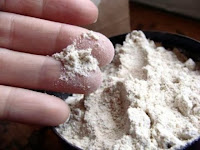Roses vary in hardiness, but all roses need some attention
going into winter. This is because our winter temperatures can fluctuate widely
and moisture levels will vary from month to month. Begin by cutting canes back about
1/3rd, to about 24" to 30". This is not an exact measurement, but it’s important to cut
canes now to prevent damage from winter winds. Prune to the outward bud, so
that future growth is toward the outside, away from the center of the bush. Don’t
prune climbing roses at this time. Secure the canes to the trellis and spray with
Wilt-Pruf® to prevent the
winter winds from drying out and damaging the canes.
 Remove any spent flowers
or rose hips at this time. Clean up fallen leaves and petals from around the
rose bush, to prevent black spot and other diseases from wintering over. Dusting
the area with Sulfur will also help control disease and insects trying to
winter over. Grafted roses need mulch to protect the graft bud from injury
during the winter.
Own-root roses are typically better at surviving winters
than grafted roses. What’s an own-root rose? These are roses that grow on their
own roots, often Heritage or Old Garden Roses. Grafted roses have a bud or
swelling just above the roots, where two different roses have been joined
together. Grafted or own-root, all roses will benefit from mounding mulch up
around the canes. This will serve to keep the ground stable and to prevent
damage to the rose as the ground freezes and thaws during the course of the
winter. This will also help retain moisture.
Soil Pep makes an excellent mulch for
roses, as well as other perennials. It stays in place well and breaks down
slowly, gradually improving the soil.
Adding Rose Collars will help keep the
mulch in place through the winter. Water your roses (and other shrubs, trees,
perennials) during the course of the winter. Pick a day when the temperature is
above 40°. Water around
mid-day and confine your watering to the base of the rose. You want to get
water to the roots, not the top of the rose. As always, you are welcome to
bring your gardening questions or concerns to the Diagnostic Center in the
Hardgoods section of the store.
Remove any spent flowers
or rose hips at this time. Clean up fallen leaves and petals from around the
rose bush, to prevent black spot and other diseases from wintering over. Dusting
the area with Sulfur will also help control disease and insects trying to
winter over. Grafted roses need mulch to protect the graft bud from injury
during the winter.
Own-root roses are typically better at surviving winters
than grafted roses. What’s an own-root rose? These are roses that grow on their
own roots, often Heritage or Old Garden Roses. Grafted roses have a bud or
swelling just above the roots, where two different roses have been joined
together. Grafted or own-root, all roses will benefit from mounding mulch up
around the canes. This will serve to keep the ground stable and to prevent
damage to the rose as the ground freezes and thaws during the course of the
winter. This will also help retain moisture.
Soil Pep makes an excellent mulch for
roses, as well as other perennials. It stays in place well and breaks down
slowly, gradually improving the soil.
Adding Rose Collars will help keep the
mulch in place through the winter. Water your roses (and other shrubs, trees,
perennials) during the course of the winter. Pick a day when the temperature is
above 40°. Water around
mid-day and confine your watering to the base of the rose. You want to get
water to the roots, not the top of the rose. As always, you are welcome to
bring your gardening questions or concerns to the Diagnostic Center in the
Hardgoods section of the store. 






















